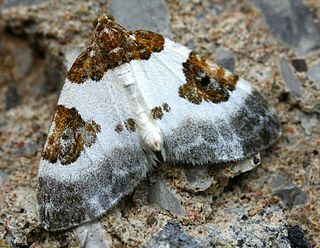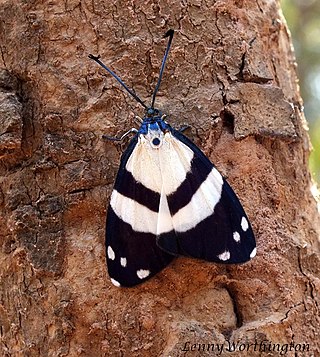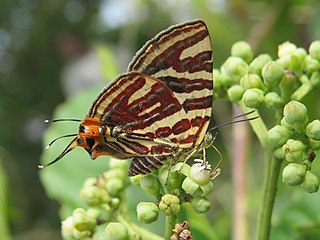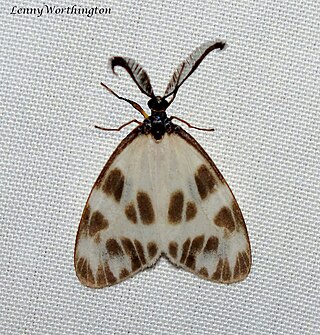
The white swamphen, also known as the Lord Howe swamphen, Lord Howe gallinule or white gallinule, is an extinct species of rail which lived on Lord Howe Island, east of Australia. It was first encountered when the crews of British ships visited the island between 1788 and 1790, and all contemporary accounts and illustrations were produced during this time. Today, two skins exist: the holotype in the Natural History Museum of Vienna, and another in Liverpool's World Museum. Although historical confusion has existed about the provenance of the specimens and the classification and anatomy of the bird, it is now thought to have been a distinct species endemic to Lord Howe Island and most similar to the Australasian swamphen. Subfossil bones have also been discovered since.

The yellow-billed blue-magpie , or gold-billed magpie, is a passerine bird in the family Corvidae, along with crows and jays. It forms a superspecies with the Taiwan blue magpie and the red-billed blue magpie. The species' range covers the northern parts of the Indian Subcontinent, including the lower Himalayan foothills, with a disjunct population in Vietnam.

The Adonis blue is a butterfly in the family Lycaenidae. It inhabits the Palearctic realm.

Cethosia cyane, the leopard lacewing, is a species of heliconiine butterfly found from India to southern China, and Indochina. Its range has expanded in the last few decades, and its arrival in the southern part of the Malay Peninsula, including Singapore, is relatively recent.

Lampides boeticus, the pea blue, or long-tailed blue, is a small butterfly that belongs to the lycaenids or gossamer-winged family.

Apatura ilia, the lesser purple emperor, is a species of butterfly native to most of Europe and east across the Palearctic. It is named for its similarity to the purple emperor butterfly.

The air forces of the United Kingdom – the Royal Navy's Fleet Air Arm, the Army's Army Air Corps and the Royal Air Force use a roundel, a circular identification mark, painted on aircraft to identify them to other aircraft and ground forces. In one form or another, it has been used on British military aircraft from 1915 to the present.

Kaniska canace, the blue admiral, is a nymphalid butterfly, the only species of the genus Kaniska. It is found in south and southeast Asia.

The Magpie is a British breed of domestic duck. It has distinctive black and white markings reminiscent of the European magpie, and is a good layer of large eggs.

Agriades jaloka, the Jaloka mountain blue, is a butterfly in the family Lycaenidae. It is found in Asia.

Arhopala anthelus, the angelus bush blue, is a species of lycaenid or blue butterfly found in the Indomalayan realm.

Plemyria rubiginata, the blue-bordered carpet, is a moth of the family Geometridae found in Europe and across the Palearctic. The moth was first described by the Austrian lepidopterists Michael Denis and Ignaz Schiffermüller in 1775.

Limenitis reducta, the southern white admiral, is a butterfly of the family Nymphalidae.

Polyommatus amandus, the Amanda's blue, is a butterfly of the family Lycaenidae. It is found in the Palearctic realm.

Corma is a genus of moths of the Zygaenidae family.

Charaxes zelica, the zelica untailed charaxes, is a butterfly in the family Nymphalidae. It is found in Guinea, Ivory Coast, Ghana, Nigeria, Cameroon, Gabon, the Republic of the Congo, the Central African Republic, the Democratic Republic of the Congo, Angola, Sudan, Uganda, Kenya, Tanzania and possibly Sierra Leone. The habitat consists of forests with altitudes of 800–1,000 metres (2,600–3,300 ft).

Cigaritis lohita, the long-banded silverline, is a species of lycaenid or blue butterfly.

Deudorix isocrates, the common guava blue, is a butterfly in the family Lycaenidae. It was described by Johan Christian Fabricius in 1793. It is found in India, Sri Lanka and Indochina in the Indomalayan realm. Other common names include pomegranate butterfly, and anar butterfly.

Corma maculata is a species of lepidopteran insect a moth in the family Zygaenidae. It is known from Assam, Bhutan, and Myanmar.

Corma zenotia is a species of moth in the family Zygaenidae.




















